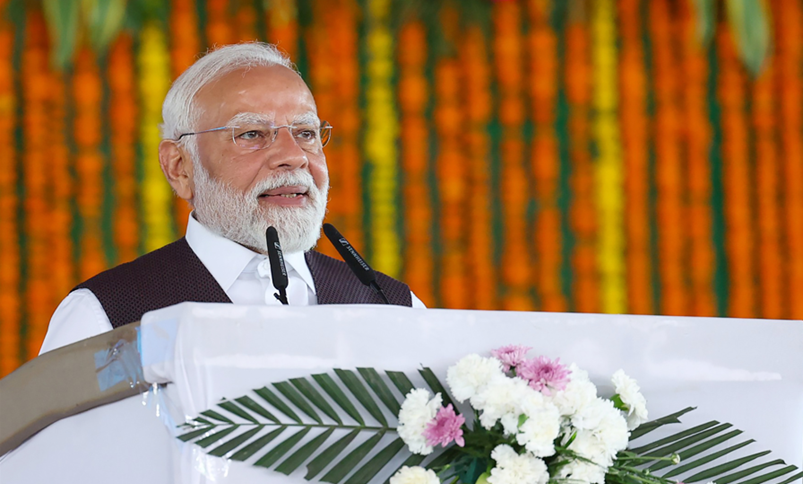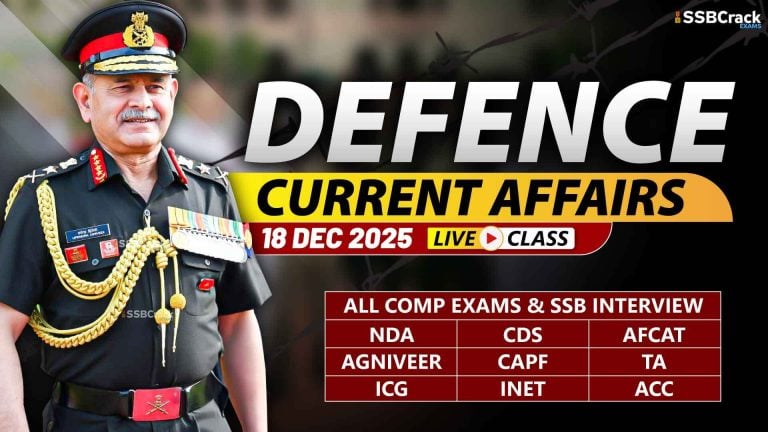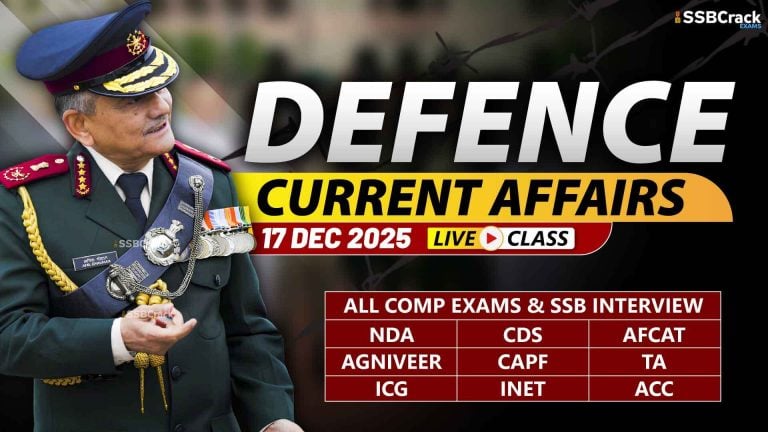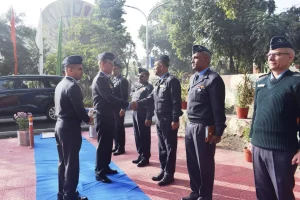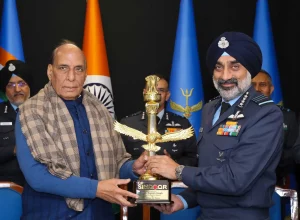India’s defence manufacturing has seen a remarkable transformation in the last eleven years. In 2023-24, the country recorded its highest ever defence production, touching Rs 1.27 lakh crore. This is a sharp rise of 174 per cent compared to Rs 46,429 crore in 2014-15, according to the release.
11 Years of India’s Defence Sector
India’s Defence Transformation: A Decade of Modernisation, Self-Reliance, and Strategic Strength
Over the last eleven years, India’s defence sector has undergone a remarkable transformation under the leadership of Prime Minister Narendra Modi. A steady rise in the defence budget, focus on indigenous innovation, and record-breaking achievements in production and exports have propelled India towards becoming a global defence powerhouse.
Rising Defence Budget and Indigenous Modernisation
India’s defence budget has seen consistent growth, rising from ₹2.53 lakh crore in 2013–14 to ₹6.81 lakh crore in 2025–26. This significant increase reflects the country’s commitment to strengthening its military foundations. The government has encouraged active participation of private industry and innovation in developing indigenous platforms and technologies. Defence corridors and strategic policies have reinforced India’s preparedness for future threats.
Record-Breaking Defence Production
In 2023–24, India achieved its highest-ever defence production at ₹1.27 lakh crore — a staggering 174% increase from ₹46,429 crore in 2014–15. This progress is largely driven by strategic reforms, policy clarity, and prioritisation of domestic procurement. From aircraft and missiles to surveillance systems and artillery, the range of indigenous products continues to grow. The Ministry of Defence signed 193 contracts worth ₹2,09,050 crore in 2024–25 — the highest in a single year — with ₹1,68,922 crore awarded to domestic firms.
Defence Industrial Corridors and Indigenisation Push
Two Defence Industrial Corridors in Uttar Pradesh and Tamil Nadu have attracted investments worth over ₹8,658 crore and signed 253 MoUs with potential investments of ₹53,439 crore. Over 5,500 items have been placed under five Positive Indigenisation Lists, of which 3,000 have already been indigenised by February 2025. Key domestically produced technologies include artillery guns, assault rifles, sonar systems, LCHs, transport aircraft, radars, and armoured platforms.
Innovations for Defence Excellence (iDEX)
Launched in 2018, iDEX has become a pillar of indigenous innovation by supporting MSMEs, startups, and academia. It has funded 619 startups, signed 430 contracts, and opened 549 problem statements by February 2025. Grants of up to ₹1.5 crore have enabled the development of critical technologies. The armed forces have procured 43 products worth over ₹2,400 crore from iDEX-supported ventures. For FY 2025–26, ₹449.62 crore has been allocated to further boost innovation through iDEX and its sub-scheme ADITI.
Skyrocketing Defence Exports
India’s defence exports have witnessed a 34-fold rise — from ₹686 crore in 2013–14 to ₹23,622 crore in 2024–25. Over 1,700 export authorisations were issued in 2024–25 alone. Exported items include bulletproof jackets, patrol boats, helicopters, torpedoes, and advanced radar systems. Major buyers now include the United States, France, and Armenia. With the target of ₹50,000 crore in exports by 2029, India is poised to become a global defence exporter.
Key Defence Acquisitions and Strategic Approvals
India has also ramped up its defence preparedness through major acquisitions:
- BrahMos Missiles: ₹19,518.65 crore contract signed in March 2024 for the Indian Navy, creating over 1.44 crore man-days of employment.
- MQ-9B Drones: 31 drones acquired from the U.S. for advanced surveillance and strike capability.
- LCH Prachand Helicopters: ₹62,700 crore contract with HAL for 156 indigenous LCHs for the Air Force and Army.
- AMCA Program: Approved in May 2025, marking a major leap in indigenous aerospace capability.
- Flight Refuelling Aircraft (FRA): First wet lease of KC-135 signed with Metrea Management.
- ATAGS Artillery Guns: ₹7,000 crore procurement of 307 guns and 327 towing vehicles developed by DRDO, Bharat Forge, and Tata.
Empowering Women in Defence: Nari Shakti
Women’s participation in the armed forces has grown significantly — from 3,000 officers in 2014 to over 11,000 by 2025. Permanent Commission has been granted to 507 women officers. The NDA opened its doors to female cadets in 2022, and 17 of them graduated with the 148th Course in May 2025. Women are now taking on roles across combat support, leadership, and even flying fighter jets, reinforcing the motto that service knows no gender.
Strengthening Internal Security and Counter-Terrorism
India’s approach to internal security has been bold and decisive. The abrogation of Article 370 in August 2019 brought Jammu & Kashmir and Ladakh under the mainstream legal framework. Over 890 central laws were implemented, 205 state laws repealed, and 130 modified for constitutional alignment.
Surgical and Precision Strikes
India has shown a zero-tolerance policy towards terrorism:
- Surgical Strikes (2016): In response to the Uri attack, Indian forces conducted cross-border operations against terror launch pads.
- Balakot Air Strikes (2019): After the Pulwama terror attack, the Indian Air Force neutralised major JeM facilities in Pakistan.
Operation SINDOOR (2025)
In April 2025, following a terror attack in Pahalgam, India launched Operation SINDOOR, targeting nine terror camps in PoJK and Pakistan. Utilizing drone strikes, loitering munitions, and layered air defence, India eliminated over 100 terrorists, including high-profile figures linked to past attacks. When Pakistan retaliated with drone and missile attacks in May, India’s integrated net-centric defence systems effectively neutralised the threats.
Conclusion: A Decade of Strategic Transformation
India’s defence journey over the last eleven years is a testament to bold policy-making, technological innovation, and an unyielding pursuit of self-reliance. From strengthening border security to emerging as a global exporter of defence equipment, India is now redefining its role on the world stage — not just as a major military power, but as a visionary builder of peace, strength, and strategic independence.



